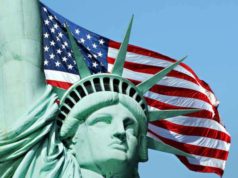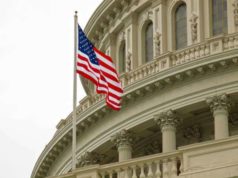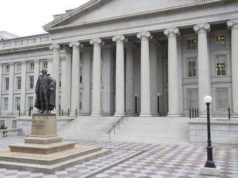
Checks and Balances: The Cornerstone of American Democracy
The concept of checks and balances is a fundamental pillar of the American system of government. Enshrined in the United States Constitution, this system of distributing and limiting power among the three branches of government—the executive, legislative, and judicial—has played a crucial role in safeguarding democracy, protecting individual rights, and preventing the abuse of authority. In this article, we will explore the concept of checks and balances, its historical origins, and its significance in American democracy.
Historical Origins
The idea of checks and balances can be traced back to the Enlightenment-era philosophers and political theorists who greatly influenced the framers of the U.S. Constitution. Thinkers like Montesquieu, John Locke, and Baron de Montesquieu advocated for the separation of powers within a government to prevent tyranny and protect the rights of citizens.
The Three Branches of Government
1. Executive Branch: The executive branch is responsible for enforcing and administering laws. It is headed by the President of the United States. The President has the authority to veto legislation passed by Congress, but Congress can override a veto with a two-thirds majority in both the House of Representatives and the Senate.
2. Legislative Branch: The legislative branch, consisting of the House of Representatives and the Senate, is responsible for making laws. While Congress can pass legislation, the President has the power to sign or veto bills. Additionally, the judiciary can review the constitutionality of laws passed by Congress.
3. Judicial Branch: The judicial branch interprets and applies the law. It consists of federal courts, with the Supreme Court being the highest court in the land. The judiciary has the power of judicial review, which allows it to declare laws or actions of the executive branch unconstitutional.
How Checks and Balances Work
The system of checks and balances operates through a series of mechanisms that ensure that no single branch of government becomes too powerful or unchecked:
1. Veto Power: The President can veto bills passed by Congress, preventing them from becoming law. However, Congress can override a veto with a two-thirds majority in both chambers, thus checking the President’s power.
2. Congressional Oversight: Congress exercises oversight over the executive branch by holding hearings, conducting investigations, and approving presidential appointments. This oversight ensures accountability and prevents abuse of power.
3. Judicial Review: The judicial branch, especially the Supreme Court, has the authority to review and interpret laws and executive actions. If a law or action is found to be unconstitutional, it can be invalidated.
4. Impeachment: Congress can impeach and remove the President or other federal officials from office for “high crimes and misdemeanors.” This process serves as a check on executive power.
5. Presidential Appointments: While the President nominates federal judges and cabinet members, the Senate must confirm these appointments. This process ensures that the executive branch is staffed with qualified individuals and prevents unchecked executive control.
Significance in American Democracy
The system of checks and balances is of paramount importance in American democracy for several reasons:
1. Preventing Tyranny: It prevents any one branch of government from accumulating too much power, which could lead to tyranny or authoritarianism. This distribution of power ensures that no single individual or group can dominate the government.
2. Protecting Individual Rights: By limiting the authority of government branches, checks and balances protect the rights and freedoms of citizens. The judiciary, for example, can strike down laws that infringe upon constitutional rights.
3. Promoting Accountability: The system promotes accountability by allowing each branch to oversee the actions of the others. This accountability helps maintain transparency and prevent corruption.
4. Adapting to Changing Times: The flexibility of the checks and balances system allows for adaptation to evolving circumstances. It has allowed the United States to address new challenges and issues while upholding its democratic principles.
In conclusion, checks and balances serve as a cornerstone of American democracy, reflecting the framers’ wisdom and commitment to creating a government that protects the rights and liberties of its citizens. This intricate system of interlocking powers and responsibilities ensures that no branch of government becomes too powerful and that the rule of law prevails. It remains a vital safeguard for democracy and a model for governments worldwide.
Following the defeat of the British forces in the Revolutionary War in 1776, the United States of America was eager to declare their sovereignty from the monarchy of King George III.
Resentment towards a totalitarian governmental body was a sentiment that was shared throughout the nation. The Continental Congress was eager to establish a doctrine that would solidify the United States autonomy as a nation, enlisting the services of political figureheads such as Thomas Jefferson and John Adams to construct such a document.
Ratified on July 4th, 1776, the Declaration of Independence not only confirmed the sovereignty of the United States of America but also outlined a desired governmental model rooted in public servitude rather than absolute power.
Although Thomas Jefferson was credited with primary authorship of the Declaration of Independence, he maintained that many of the ideas he had implemented in the text of the Declaration of Independence were inspired by fellow political thinker John Locke. Locke upheld that any central government that retained the right to remove rights from its citizens was innately flawed in its nature. Furthermore, he expressed that a central government must operate under the pretense that its citizens have consented to be governed. As a result, the ruling governing body operates as an entity of servitude rather than totalitarianism.
Jefferson’s idea of an ideal government not only shaped the governmental construct outlined in the Declaration of Independence but also laid the foundation for a system of checks and balances, further regulating the power of the central Government.
A system of checks and balances, which would be further outlined in The Federalist Papers, and later in the Constitution, was a system created to disburse power throughout multiple governmental factions rather than consolidate power to a single one. As a result, no single gubernatorial entity would be permitted to have more power than any other.
Each of the 3 branches of government, which included the Executive, Legislative, and Judicial branches, were required to work in tandem in order to pass or amend laws. Because of the overlapping of their respective jurisdiction, a totalitarian governmental body was impossible. The power allowed to them by the Declaration of Independence was kept both in check, as well as balanced.
The Declaration of Independence established that a central government was to be elected by the people and, as a result, the role of government would be to preserve and protect the interest of its citizens. Since the citizens of the United States would be allowing themselves to be governed, they were entitled to overthrow a government that they perceived to be tyrannical.
The Declaration of Independence allowed for a central government whose innate ruling power would be dwarfed by the power that its citizens possessed. Since the citizens were allowing themselves to be governed, this assigned fleeting power to any gubernatorial body. Any central government that existed in the United States would be subject to abolition if its citizens felt that their needs were not being met.
























